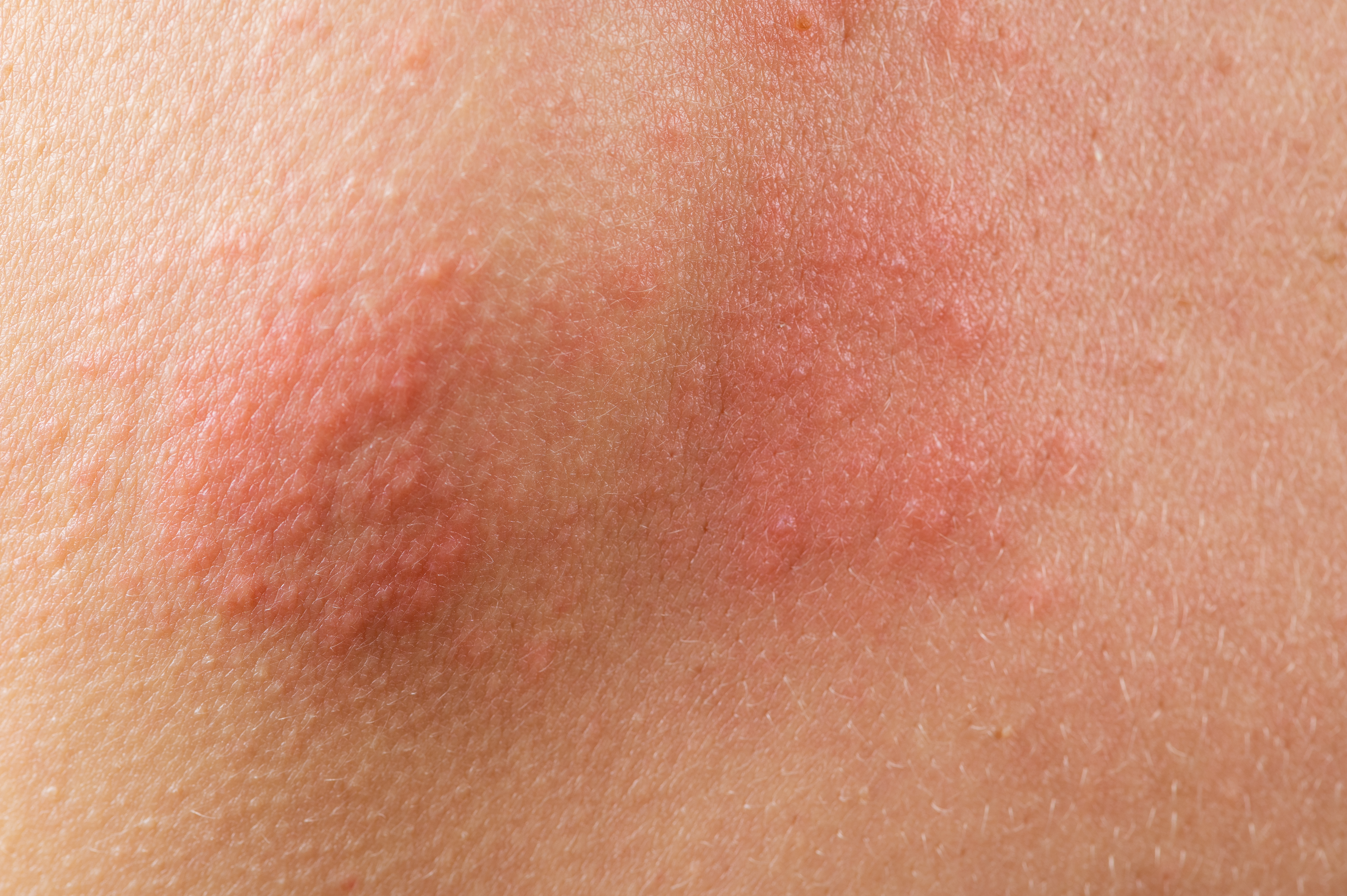11 Alarming Tick Symptoms You Can't Afford to Miss
Ticks, small arachnids often overlooked due to their size, pose significant health risks to humans and animals alike. These parasites are not just a nuisance; they are vectors for a variety of diseases that can have serious health implications. As outdoor activities increase, so does the risk of tick exposure, making awareness and early detection crucial. This article delves into the 11 must-know signs of tick trouble, providing a comprehensive guide to recognizing and addressing tick-related issues. From understanding how ticks operate to identifying symptoms of tick-borne diseases, this exploration aims to equip you with the knowledge needed to protect yourself and your loved ones.
1. Understanding Tick Habitats: Where Trouble Begins

Ticks thrive in environments that provide ample opportunities for feeding and reproduction. They are commonly found in wooded areas, tall grasses, and leaf litter, making these places potential hotspots for tick encounters. Understanding their habitats is crucial for prevention. Ticks are adept at sensing body heat and carbon dioxide, which guide them to their hosts. Their ability to remain dormant for long periods, waiting for the right conditions, makes them particularly resilient. Being aware of these habitats allows individuals to take preventive measures, such as wearing protective clothing and using tick repellents when venturing into these areas.
2. Recognizing the Tick Lifecycle: A Prelude to Infestation

Ticks undergo a complex lifecycle that includes four stages—egg, larva, nymph, and adult. Each stage requires a blood meal to progress to the next, making hosts essential for their development. Understanding this lifecycle is key to recognizing potential infestations. Nymphs, often the size of a poppy seed, are particularly dangerous due to their small size and the difficulty in detecting them. Awareness of the lifecycle helps in identifying peak times for tick activity and implementing timely preventive measures, such as mowing lawns regularly and removing leaf litter to reduce tick habitats.
3. Spotting the Physical Presence of Ticks

The most direct sign of tick trouble is the physical presence of ticks on the body. Ticks attach themselves to warm, moist areas of the skin, such as the scalp, armpits, and groin. Regularly checking these areas, especially after spending time outdoors, is crucial. Ticks can vary in size depending on their life stage, with adult ticks being more visible than nymphs. Prompt removal of ticks is essential to reduce the risk of disease transmission. Using fine-tipped tweezers to grasp the tick as close to the skin's surface as possible is recommended for safe removal.
4. Identifying Tick Bites: The First Line of Defense

Tick bites are often painless and may go unnoticed, but they can leave behind telltale signs. A small red bump, similar to a mosquito bite, is common at the site of a tick bite. In some cases, a rash may develop, which can be a critical indicator of tick-borne diseases. The classic "bull's-eye" rash, associated with Lyme disease, is one such example. Recognizing these signs early can lead to prompt medical intervention and prevent more severe complications. It's important to monitor any changes in the skin following a suspected tick bite and seek medical advice if necessary.
5. Flu-like Symptoms: Early Indicators of Tick-borne Diseases

Tick-borne diseases often manifest with flu-like symptoms, including fever, chills, fatigue, and muscle aches. These symptoms can appear days or even weeks after a tick bite, making the connection to tick exposure crucial. While these symptoms are common to many illnesses, their sudden onset following outdoor activities should raise suspicion of a tick-related issue. Early recognition and treatment of these symptoms are vital, as delayed treatment can lead to more severe health problems. Consulting a healthcare professional for proper diagnosis and treatment is recommended when these symptoms arise.
6. Neurological Signs: When Ticks Affect the Nervous System

Ticks can transmit pathogens that affect the nervous system, leading to neurological symptoms such as headaches, dizziness, and even facial paralysis. Lyme disease, in particular, is known for causing such complications if left untreated. The presence of these symptoms, especially when coupled with a history of tick exposure, warrants immediate medical attention. Neurological symptoms can be debilitating and have long-term effects, making early detection and treatment essential. Understanding the potential for neurological involvement highlights the serious nature of tick-borne diseases and the importance of vigilance in recognizing symptoms.
7. Joint Pain and Swelling: The Hidden Impact of Ticks

Joint pain and swelling are common symptoms of several tick-borne diseases, including Lyme disease and Rocky Mountain spotted fever. These symptoms can mimic those of arthritis, leading to misdiagnosis if the connection to tick exposure is not made. The onset of joint issues following outdoor activities should prompt consideration of a tick-borne cause. Early intervention can prevent long-term joint damage and improve outcomes. Recognizing the link between ticks and joint symptoms is crucial for timely diagnosis and treatment, underscoring the importance of awareness and education in tick-related health issues.
8. Skin Rashes: The Visible Signs of Tick Trouble

Skin rashes are a common manifestation of tick-borne diseases and can vary in appearance. The "bull's-eye" rash is well-known in Lyme disease, but other rashes may appear as well, depending on the specific pathogen transmitted by the tick. These rashes can be itchy or painful and may spread over time. Recognizing the characteristics of these rashes can aid in early diagnosis and treatment. It's important to document the appearance and progression of any rash following a tick bite and seek medical advice to confirm the cause and receive appropriate care.
9. Cardiovascular Symptoms: The Overlooked Consequence

Ticks can also affect the cardiovascular system, leading to symptoms such as palpitations, chest pain, and shortness of breath. These symptoms can occur in diseases like Lyme carditis, where the bacteria affect the heart's electrical system. Cardiovascular symptoms may appear weeks to months after the initial tick bite, making the link to tick exposure less obvious. Awareness of this potential complication is crucial, as untreated cardiovascular involvement can lead to severe outcomes. Early recognition and treatment of cardiovascular symptoms can prevent long-term damage and improve quality of life.
10. Behavioral Changes: The Subtle Signs of Tick Trouble

Ticks can indirectly cause behavioral changes through the diseases they transmit. Symptoms such as irritability, difficulty concentrating, and mood swings can occur in tick-borne illnesses like Lyme disease. These changes can be subtle and easily attributed to stress or other factors, delaying diagnosis and treatment. Recognizing the potential for behavioral symptoms in the context of tick exposure is important for comprehensive care. Addressing these symptoms with a healthcare professional can lead to appropriate interventions and support for affected individuals and their families.
11. Digestive Issues: An Unexpected Symptom

Digestive issues, including nausea, vomiting, and abdominal pain, can be associated with certain tick-borne diseases. These symptoms may be overlooked as they are not commonly linked to tick exposure. However, in the context of other symptoms or a known tick bite, they can provide important clues to the underlying issue. Understanding the potential for digestive involvement highlights the diverse ways in which tick-borne diseases can manifest. Prompt recognition and treatment of digestive symptoms can improve outcomes and prevent further complications.
Understanding the signs of tick trouble is an essential step in protecting against the health risks posed by these small but dangerous parasites. Early recognition of symptoms and prompt medical intervention can prevent serious complications and improve outcomes. By staying informed and vigilant, individuals can reduce their risk of tick exposure and ensure timely treatment if needed. This comprehensive guide to tick trouble empowers readers with the knowledge needed to navigate the challenges posed by ticks, promoting health and well-being for all.